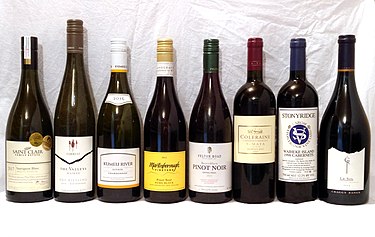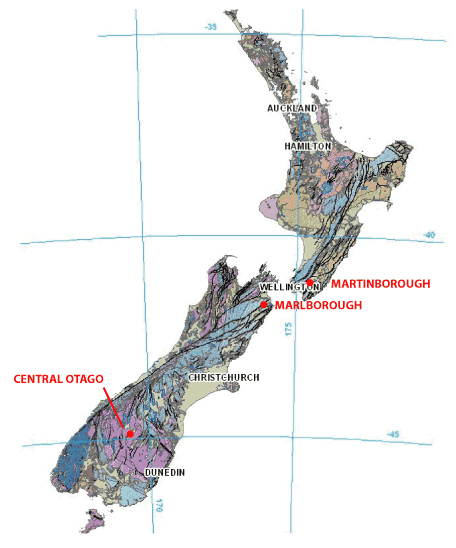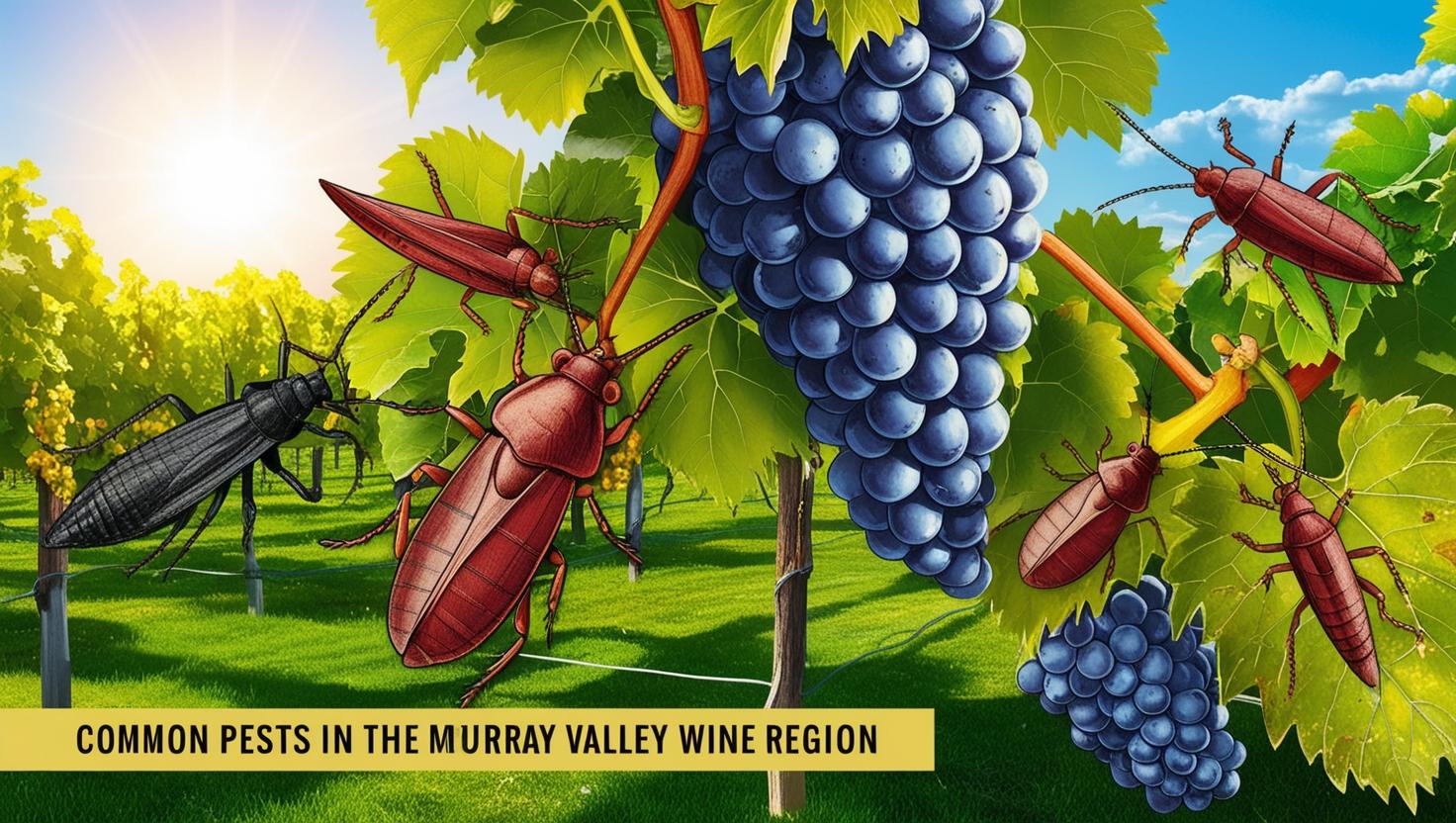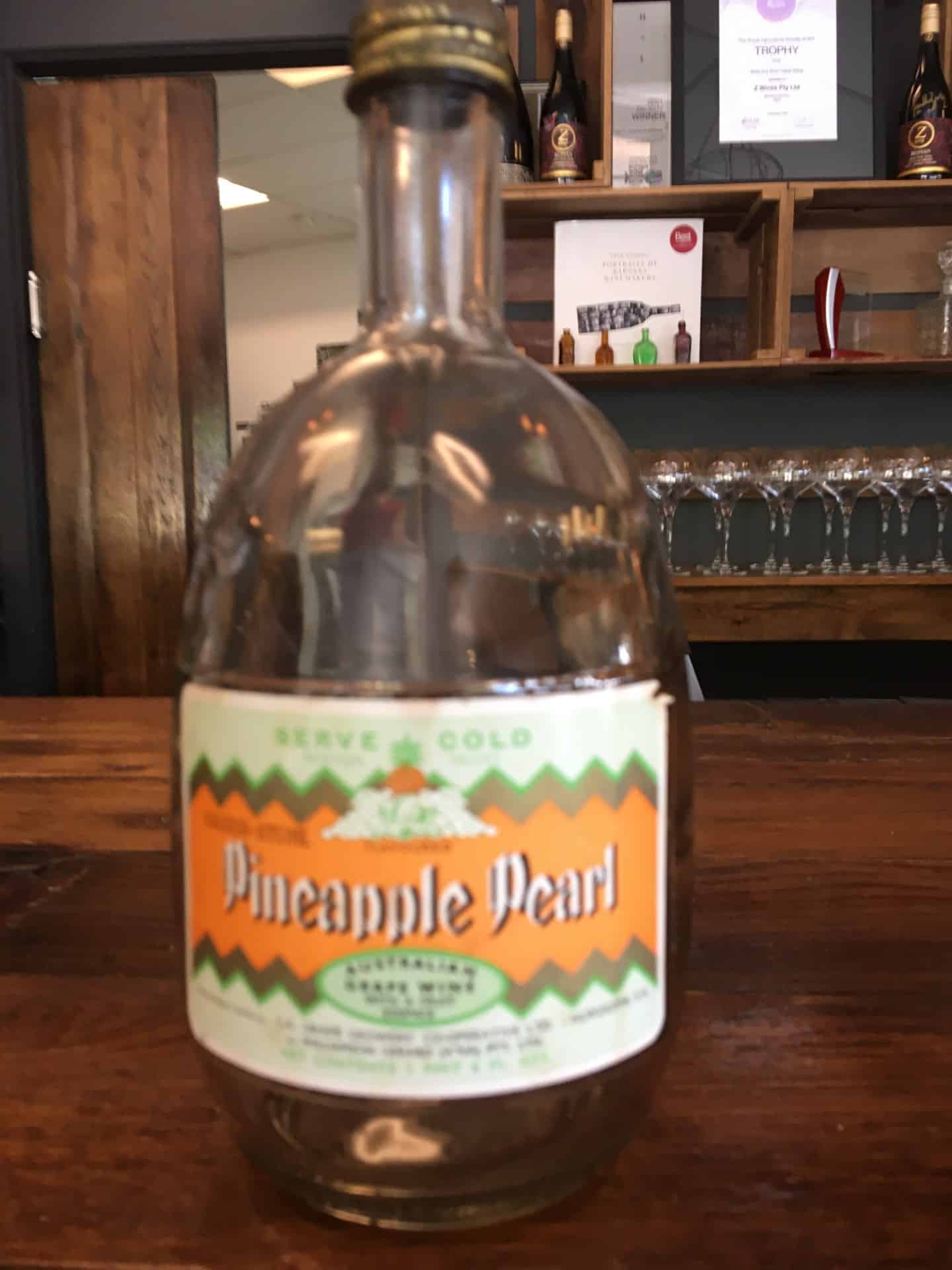
Most of the soils of New Zealand vineyard regions are derived from glacially produced sediments. The current ice age started about 2.5 million years ago. Of this period New Zealand glacial sediments cover the last 650,000 years.
The major cycles of this ice age, cold to warm to cold, have a length of about 105,000 years. As well there are numerous shorter span cycles, thus as the main cycle breaks from the cold spell there can be a number of colder and warmer periods as it heads down to the maximum part of the warm cycle. We are probably in the maximum part of the warm cycle now.
Because this cold warm cycle has been repeated again and again the same processes of sediment creation and deposition have been repeated. Thus many of the vineyard sites have a common origin and are composed of similar, glacially derived sediments though they can be of different ages.
Glaciers are very powerful erosional forces grinding away rock as they advance to produce an unsorted blend of boulders, lumps of rock, and crushed rock fragments of all sizes to particles as fine as flour. Retreating glaciers leave behind this load of unsorted rock debris, termed till. Deposits of till are normally eroded by streams from retreating glaciers but can be preserved if they are on the sides of a valley, are very recent, or are so large that streams have diverted around them. This is very apparent in the Cromwell Basin, Otago.
Streams emerge from the tongue of the glacier particularly during seasonal melting and large volumes of water, thick with sediment flow over a wide area. These form outwash fans and the many streams flowing across the fans meet to form a swift flowing river which is normally braided, meaning many streams criss-cross over the valley floor. Many of the New Zealand valley floors are quite wide and can be from three to twelve kilometres, being wider of course closer to the ocean outfall.
These streams rapidly work the rock fragments into the characteristic oval and round cobble shapes so common along New Zealand streams. As well previous deposits are eroded and there is a constant washing and grading of older river bed sediments.
Both the outwash fans and the river terraces, composed of cobble, sand and silt beds, are ideal for vines as they drain very easily.
A feature of the vineyard regions is the stepping of terrace levels from higher and older terraces abutting the valley slopes, to progressively lower and younger terraces close to the river. The dissection of previous terrace levels can happen in a number of ways.
The intensity of each glacial phase varies and a particularly cold phase with thicker ice will lead on melting to a swifter river. This can erode the previous terrace level particularly if the river can deepen the channel. Sea water levels will also have a role and if a lot more of the continental shelf is exposed this additional gradient will also allow the river to cut back upstream. Lastly New Zealand is a geologically unstable country thus it is likely that at times valleys and the terraces have been uplifted. This will alter the gradient of the river which may then cut down into the bedrock, creating a newer and lower terrace, stranding the older terraces.
Multiple terrace levels are very common in New Zealand wine regions and can be seen in the Cromwell basin, Marlborough and Martinborough. These terraces have proved to be very favourable for vineyards when they have good sunlight exposure and are drier than surrounding areas.

Glaciation is also associated with dry periods and cold winds and a feature of glaciated terrain is wind blown silt, termed loess that is frequently found capping the surface terrace sediments. This is common in Otago and in parts of Marlborough and possibly Martinborough. The term soil hardly seems to apply in some of the vineyard areas as the sediment base is very young, being post glacial at less than 10,000 years, and soil horizons in the conventional sense with an organically enriched top horizon are mostly absent.
Some elements do go into solution readily and in Otago nodules of calcrete (calcium carbonate) were found in recent scree slopes that looked like they had tumbled down very recently, an illustration that modification of sediments and the development of soil horizons can happen quickly.
Similar glacially derived soil types are common in Argentine and Chile. Sediments in the parts of the Rhone Valley, particularly Chateau Neuf du Pape and more famously the left bank of Bordeaux also have a glacial origin although they show more sorting or grading by water as they are further from the glacial source.
The vineyard soils of Australia and New Zealand are startling different. While many Australian vineyards are on transported sediments like New Zealand these are mostly river sediments and are very fine grained.
In other areas the soil profiles can be well developed, particularly the lower horizons and it is not unusual to find many metres of deeply weathered rock before signs of fresh rock is found. It is quite possible that these deeply weathered zones are millions of years old. This author does though have the view that the near surface layers are likely to be recently formed as the chances for surface erosion are so high. Like New Zealand the top layer will also contain a much higher component of wind blown silt than is commonly recognised.
In this description we have only dealt with the common glacial origin of the vineyard soils. Other terroir influences such as sun light hours and temperature, rainfall, exposure of the vineyard to wind and sun, diurnal variations in temperature, influence of the prevailing weather pattern from the southern ocean and many other variables may be more important for grape quality and need to be woven into this base to form the overall terroir picture.




